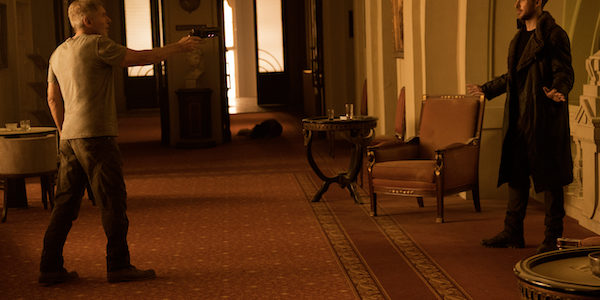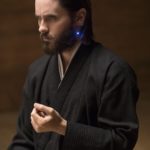
ReelBob: ‘Blade Runner 2049’ ★★★★
By Bob Bloom
I had trepidations about “Blade Runner 2049.”
The 1982 “Blade Runner” was such an iconic, groundbreaking touchstone that it was hard to imagine a follow-up even coming close to the original.
Luckily, my fears were for naught. “Blade Runner 2049” is as good as its predecessor. It superbly carries the story forward, handling a variety of issues — ethical, societal, political and biological.
The sequel builds and expands upon the original and strengthens your appreciation and understanding of it.
It has a seemingly seamless transition from “Blade Runner” to its sequel.
Ridley Scott, who directed the original, serves as a producer, handing the behind-the-camera chores to Denis Villeneuve, who helmed last year’s most satisfying science-fiction feature, “Arrival.”
“Blade Runner 2049” is set 30 years after the original. The world remains populated with replicants — humanlike creations that do most of mankind’s work. They are basically slave labor.
Officer K (Ryan Gosling), a replicant, also is a LAPD blade runner, assigned to track down outdated models and “retire” them — which usually means killing them.
We first encounter K as he finds his target, Sapper Morton, a short, memorable performance by David Bautista. Searching the scene, K uncovers something buried in the ground that could have devastating implications on mankind if its contents are revealed.
While “Blade Runner” was more a detective feature, the sequel is more a mystery. The futuristic, science-fiction applications are decorations that amplify K’s search for the truth.
The flying cars and giant advertisements for off-world pleasures remain. Yet “2049” is more oppressive — grayer, darker and definitely rainier.
Villeneuve, working from a script by Michael Green and Hampton Fancher, have created a most satisfying movie that — even at about 160 minutes — mesmerizes you. It grips you like a vise and refuses to let you go.
At times, you involuntarily lean into the screen awaiting the next revelation.
For fans of the original, of course, the return of Harrison Ford’s Rick Deckard is what they want. How he fits into this cinematic puzzle is logical and emotionally gratifying.
Gosling and Ford are matched — and, at times overshadowed — by a trio of very strong female performers, most notably, Sylvia Hoeks. As Luv, the deadly replicant works for the replicant  manufacturing corporation run by Jared Leto’s Niander Wallace, who wants to identify the secret so his company can profit and advance by it.
manufacturing corporation run by Jared Leto’s Niander Wallace, who wants to identify the secret so his company can profit and advance by it.
Ana de Armas is sweet and compassionate as Joi, K’s virtual-reality girlfriend. She brings a vulnerability and a tenderness to her characterization.
Robin Wright as K’s superior is profanely ruthless and rigid, fighting to contain a situation that could rip society apart.
The strength of “Blade Runner 2049” lies in its humanity. For a movie dealing mostly with artificial life, the film touches on such issues as memory, freedom of choice and the rights of individuals.
“Blade Runner 2049” is one of the best movies of the year, abetted by stunning cinematography by Roger Deakins, who assuredly should receive an Academy Award nomination.
Do you need to see the original to appreciate “2049?” Not really, but it would increase the satisfaction and enjoyment of the movie.
Either way, many of the sights and sounds of “Blade Runner 2049” will be etched in your mind. It is an impressive endeavor and a resounding work of art.
I am a member of the Indiana Film Journalists Association. My reviews appear at ReelBob (reelbob.com) and Rottentomatoes (www.rottentomatoes.com). I also review Blu-rays and DVDs. I can be reached by email at bobbloomjc@gmail.com or on Twitter @ReelBobBloom. Links to my reviews can be found on Facebook, Twitter, Google+ and LinkedIn.
BLADE RUNNER 2049
4 stars out of 4
(R), language, graphic violence, nudity, sexual content